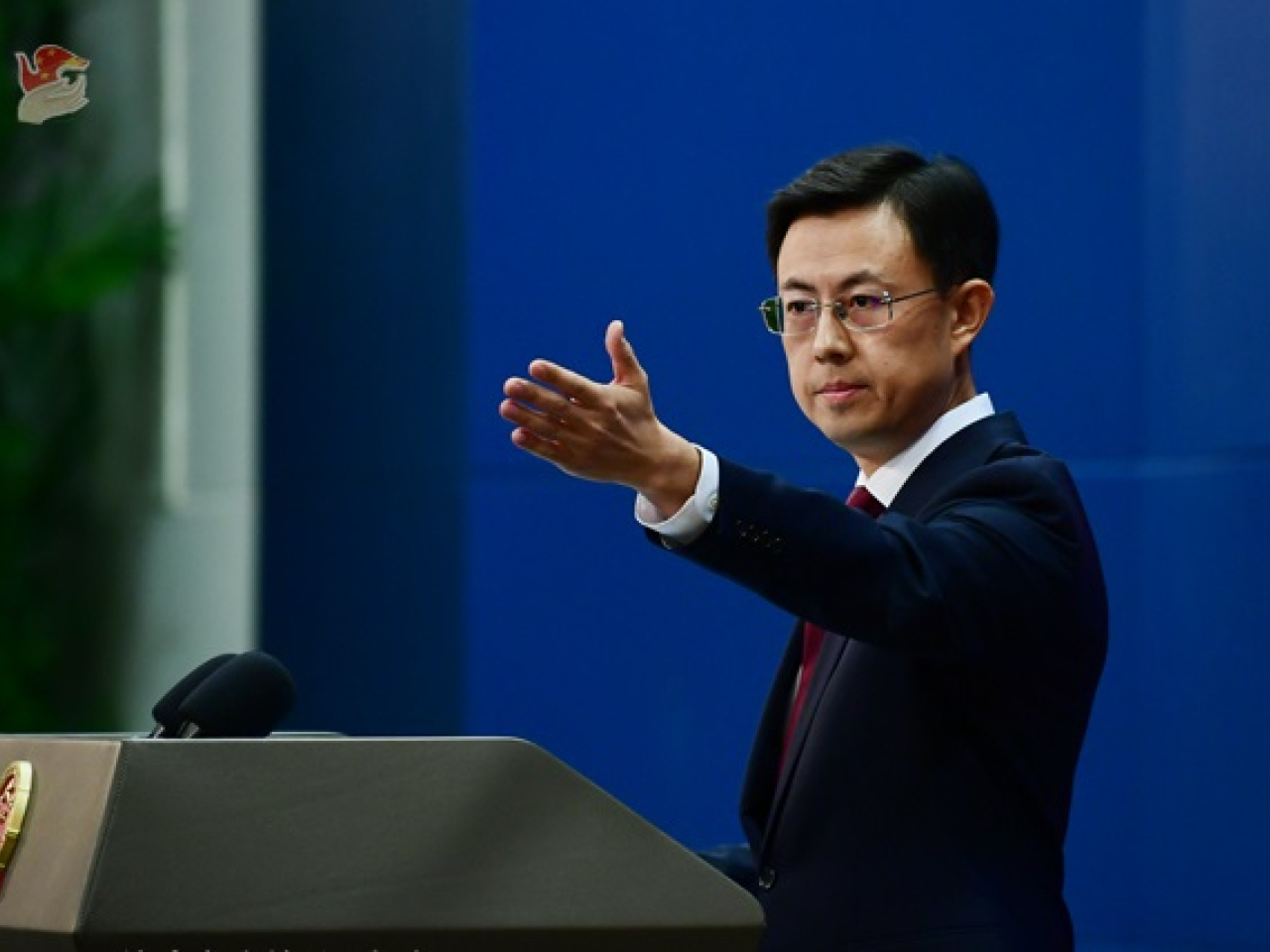The trade dispute between Washington and Beijing has escalated following President Donald Trump’s announcement regarding tariffs on Chinese imports.
China’s Commerce Ministry responded, urging the United States to reconsider and warning that such measures could undermine diplomatic efforts aimed at stabilizing bilateral relations.
Recent months have seen both nations tighten various trade controls, with China adjusting export policies on certain rare earth minerals and the United States maintaining restrictions on advanced technology exports. These actions represent ongoing tensions between the world’s two largest economies.
Both nations have engaged in diplomatic discussions, though recent actions suggest persistent disagreements remain. The situation raises questions about whether talks can produce resolution or whether economic friction will intensify.
What are tariffs on Chinese imports?
Tariffs are taxes imposed on imported goods that increase their cost when entering a country. When applied to Chinese products, they affect consumer electronics, industrial equipment, clothing, furniture, and many other categories. Such measures have been used periodically by various administrations to address trade imbalances and other economic concerns.
Why are rare earth minerals significant?
China controls approximately 70% of global rare earth mineral production and a substantial portion of processing capacity. These materials are essential for manufacturing smartphones, electric vehicles, wind turbines, and military equipment. Beijing has historically adjusted export policies on these materials in response to various international trade developments.
Timeline of trade tensions
Recent years have seen various trade actions from both sides. China has adjusted export controls on certain materials following U.S. restrictions on technology sales, particularly advanced semiconductors and AI systems. Washington has implemented various measures affecting Chinese technology companies and imports.
Trade policy between the two countries has fluctuated based on changing diplomatic relations and economic priorities.
Official responses from Beijing
Commerce Ministry officials have stated that Washington should adhere to commitments made during previous meetings. Chinese representatives have characterized recent tariff discussions as potentially contrary to the spirit of productive negotiations.
Beijing has noted its efforts to increase purchases of U.S. agricultural products and strengthen intellectual property protections in accordance with prior agreements.
Impact on trade and supply chains
Trade restrictions affect a substantial range of products, with implications for consumers and businesses in both countries. Rare earth minerals present particular concerns, as they are essential for electronics manufacturing, renewable energy technologies, and defense systems. Beijing maintains dominant control over global supply and processing.
Critical materials include neodymium and dysprosium for electric vehicle motors, europium for display screens, and terbium for wind turbines. This market position provides Beijing significant leverage in trade discussions.
Potential responses
Chinese officials have historically stated that Beijing does not seek trade wars but will protect its interests when necessary. Past responses to U.S. trade measures have included tariffs on American agricultural goods and various restrictions on U.S. companies operating in China.
How do tariffs affect consumers?
Tariffs typically lead to higher prices on affected products including electronics, appliances, furniture, clothing, and toys. When import costs increase, companies often pass these costs to buyers. The extent of price increases depends on various factors including the specific tariff rate, available alternative suppliers, and market competition.
Economic implications
Trade restrictions create effects in both countries. For Americans, this can mean increased prices across various product categories. For U.S. companies relying on Chinese components or finished goods, options include finding alternative suppliers, absorbing costs, or passing them to customers.
For China, implications extend beyond reduced sales. The manufacturing sector employs hundreds of millions and depends heavily on exports. Changes in U.S. demand affect production levels and employment, particularly in coastal provinces where export-oriented manufacturing is concentrated.
Market responses
Financial markets typically respond to major trade announcements with volatility in stock prices and currency exchanges. The extent and duration of such volatility depends on various factors including the perceived likelihood of implementation and potential economic impact.
What is the status of U.S.-China trade relations?
Washington and Beijing have held various meetings addressing ongoing issues including state subsidies, market access for foreign companies, intellectual property protection, and agricultural trade. Fundamental disagreements persist regarding industrial policy and technology transfers.
Key areas of disagreement
Recent actions reflect ongoing tensions in diplomatic discussions. Both capitals have stated commitment to maintaining economic relations, with officials emphasizing the importance of stability.
Discussions have addressed persistent issues including state subsidies for key industries, market access for foreign companies, intellectual property enforcement, technology transfer concerns, and agricultural trade.
Industrial policy differences
Fundamental disagreements remain. Washington objects to Beijing’s industrial policies, which provide substantial government support to strategic sectors including semiconductors, electric vehicles, renewable energy, and biotechnology. American officials argue these create market distortions.
Beijing maintains that its industrial policies represent legitimate development strategies and points to similar programs in other developed nations. Chinese officials have stated they will not fundamentally alter their economic system in response to external pressure.
Why are semiconductors important in U.S.-China relations?
Advanced semiconductors enable artificial intelligence, quantum computing, autonomous vehicles, and military systems. Both nations view chip design, manufacturing, and supply chain control as critical priorities. The U.S. has invested in domestic production while restricting Beijing’s access to certain advanced chipmaking equipment. China has responded with investment in semiconductor development.
Broader strategic competition
The dispute encompasses more than trade policy. It involves competition between two major powers over technology leadership, military capabilities, and global influence. Economic policy intersects with these broader strategic concerns.
Technology competition
Semiconductors illustrate this dynamic. Advanced chips are critical for various applications including AI, quantum computing, and autonomous systems. Both nations have implemented policies to reduce mutual dependence in this sector.
Washington has invested in domestic chip production while restricting Beijing’s access to certain equipment. China has invested heavily in its own semiconductor development.
Rare earths as leverage
These materials represent another area of contention. They are essential for modern technology, and Beijing’s dominant position creates dependencies both nations recognize. U.S. policymakers have identified rare earth supply chains as a concern, while Chinese officials view these resources as strategic assets.
Global implications
Effects extend beyond the United States and China. Many countries maintain relationships with both powers and face considerations when the two disagree. Some are positioning themselves as alternative manufacturing locations, attempting to attract companies seeking supply chain diversification.
International institutions
International institutions including the World Trade Organization have addressed various U.S.-China disputes. Both countries have filed complaints regarding each other’s practices through WTO mechanisms.
Future outlook
The trajectory of U.S.-China trade relations remains uncertain. Both sides face domestic considerations that influence their approach to negotiations and trade policy.
Long-term trends
Trade relationships, supply chains, and investment patterns continue evolving in response to U.S.-China competition. Companies are diversifying production, countries are reassessing economic dependencies, and the international system continues adapting.
Navigating complex relations
The situation reflects two major economies managing a relationship characterized by deep economic integration alongside increasing competition. Decisions made in Washington and Beijing influence not only their respective economies but also patterns of global trade and investment.
Contact us today through our WhatsApp to discover how we can help you achieve success in the United States.
Sources: ABC News | The Guardian | Courthouse News



